Nikkosan Rinnoji Temple
See & Do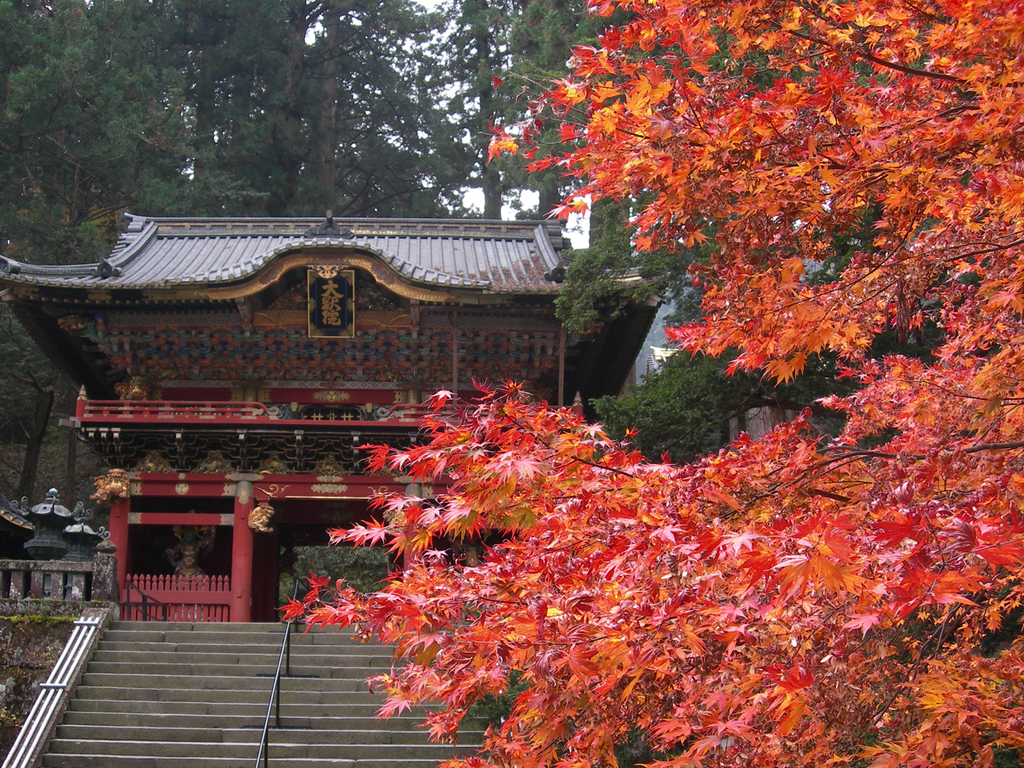
We use cookies on this site to enhance your user experience. If you continue to browse, you accept the use of cookies on our site. See our cookis policy for more information.
There are numerous historical buildings scattered throughout Japan, including in the ancient capital of Kyoto and in Kamakura where the samurai culture flourished. Counted among them is the World Heritage site, the Shrines and Temples of Nikko in Tochigi Prefecture. Part of the complex site is the popular Nikko Toshogu Shrine, which retains its stunning appearance 400-plus years after it was constructed. We take a tour of Toshogu Shrine with a shrine carpenter responsible for its repairs to explore the beauty of its construction.
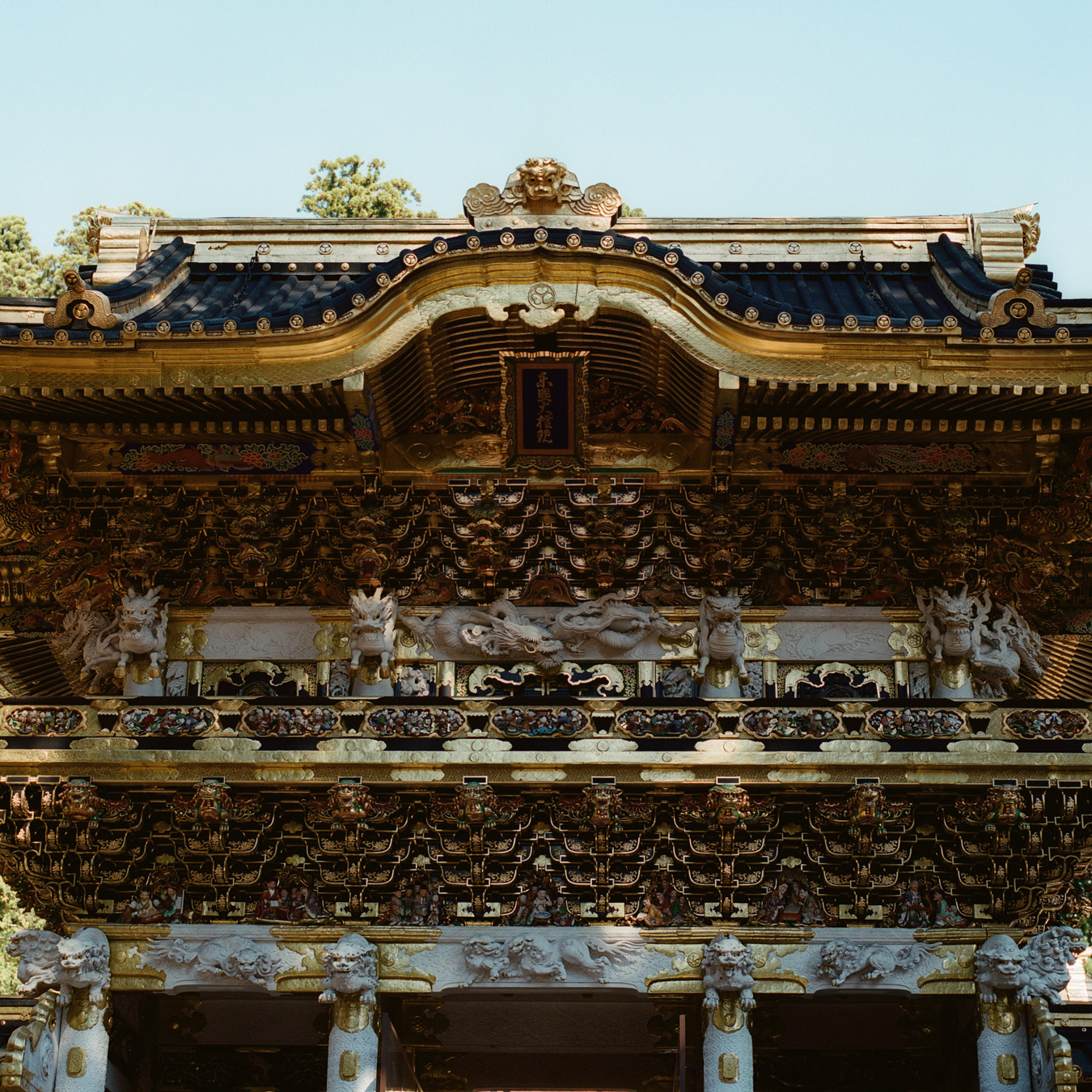
Toshogu Shrine is dedicated to the general, Ieyasu Tokugawa (1543–1616) who ended the warring period that lasted over a hundred years. Nikko Toshogu Shrine was built in 1617 and has undergone major reconstructions to become the building that stands today.
There are professional shrine carpenters who carry out daily maintenance and repairs on these kinds of historical buildings. Most are engaged in repairing buildings designated as cultural assets, such as shrines and temples, but there are also carpenters who build new ones.
We accompany a veteran shrine carpenter of twenty years, Mr. Fukuda who is responsible for repairing the Shrines and Temples of Nikko (Futarasan-jinja Shrine, Toshogu Shrine, Rinno-ji Shrine).
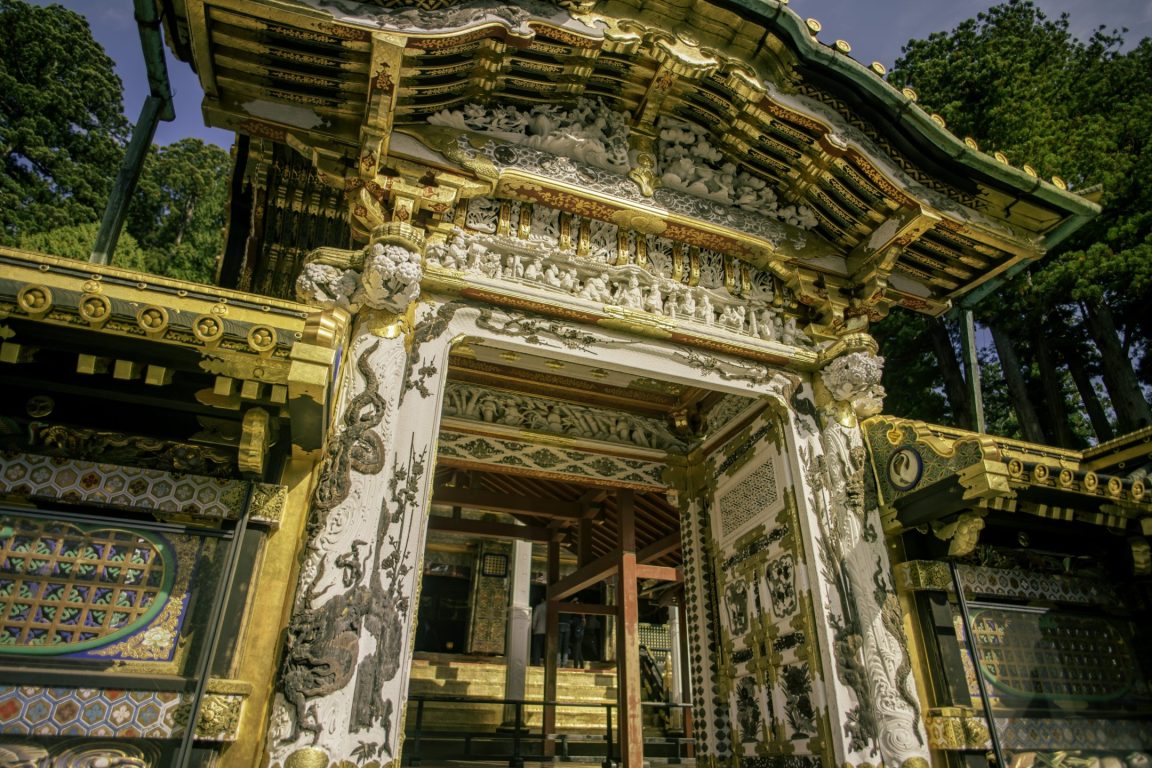
The pillars, beams, and other components in traditional architecture such as shrines and temples are larger than ordinary houses. Because of this, standard architectural tools often can’t be used, and it’s not unusual to work materials by hand. That is precisely why the existence of shrine carpenters who have special skills and repair traditional architecture is so valued.
In the case of Toshogu Shrine, the main work is repainting areas where paint and coloring have flaked off. The overall paint is redone every 50–60 years. However, partial repairs are carried out every 20–30 years since damage to components is serious in outside areas affected by wind and rain. Large-scale fundamental repairs that include dismantling have so far been carried out at a pace of once every 100–200 years.
Fukuda: Work on cultural assets starts with inspecting what requires repairs. We fix damaged areas as a result of inspections, but whether we fully replace a component or conduct partial grafting depends on the condition.
Retaining the traditional techniques and materials is connected to protecting the value of the cultural assets. To the extent possible, it’s important to keep the original components as they are.
Wood is easily damaged in Nikko where there is a lot of moisture throughout the year. If deterioration in a wooden building progresses, the building will lean. However, if inspections are regularly conducted and repairs meticulously made, then the life of that building becomes very long.
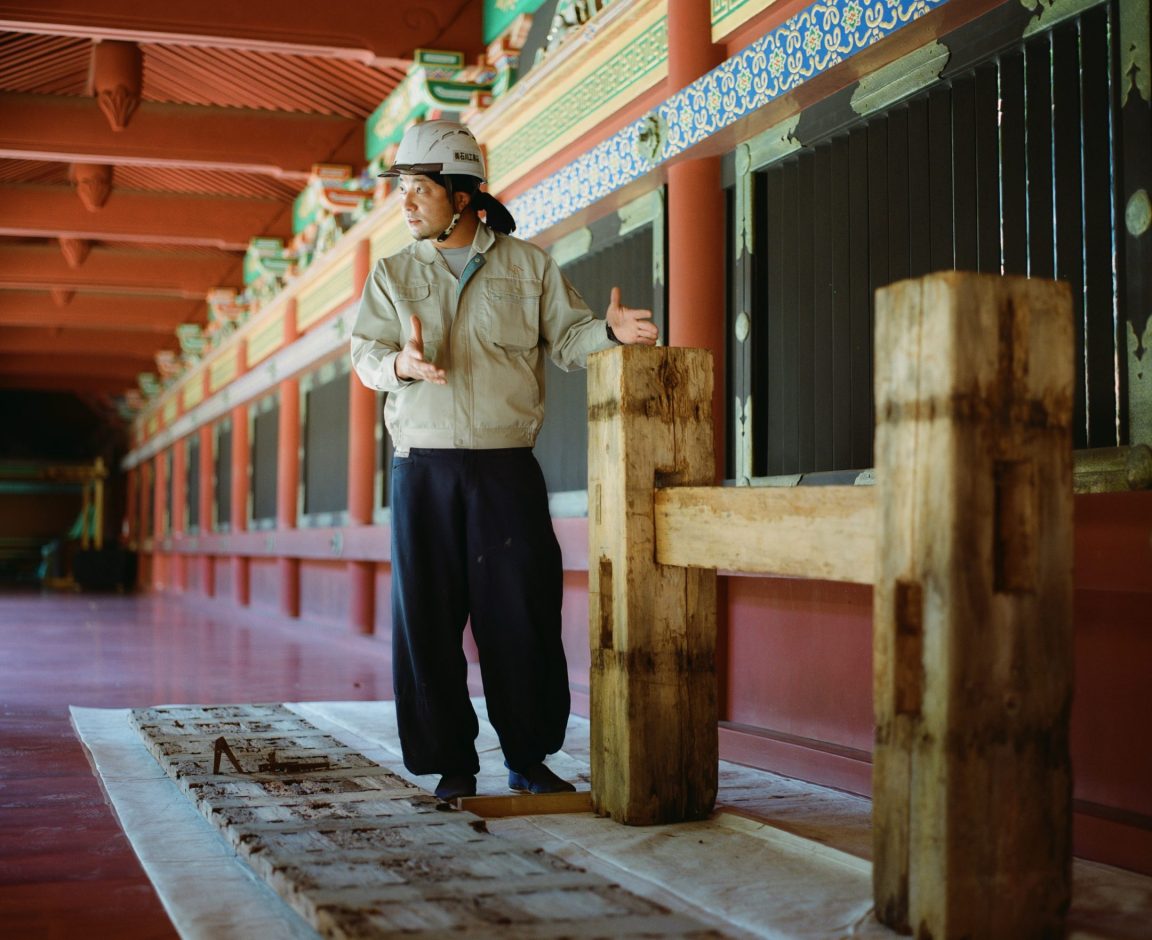
Mr. Fukuda showed us the floorboards in the Worship Hall at Toshogu Shrine that had rotted after many years. The last recorded replacement of the floorboards in the Worship Hall was 1688–1690, so at the very least that wood material had been used since that period.
Fukuda: Creating such large floorboards requires using trees that have been growing for hundreds of years, so they aren’t readily used in ordinary construction. Plus, trees can’t be immediately used after being cut down because they contain a lot of moisture, so just preparing the materials is a big undertaking.
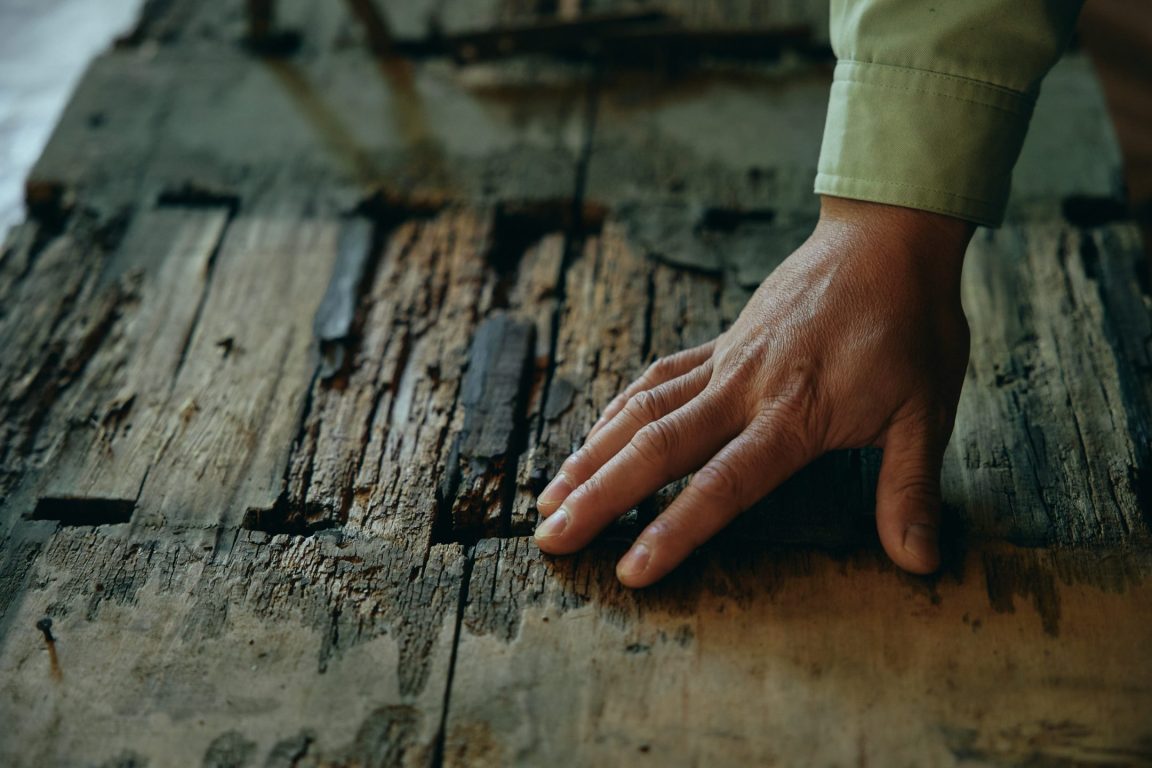
Fukuda: One of the major reasons that Toshogu Shrine has lasted so long is because materials of good quality have been used. Examples include wood with narrowly spaced growth rings and highly dense materials. Today, it’s difficult to find such good-quality wood. The amazing thing about Toshogu Shrine is that even the components under the floors use that kind of fine-grained, high-quality wood. Since the building is dedicated to Lord Ieyasu, that unsurprisingly shows that good materials were assembled at considerable expense for its construction.
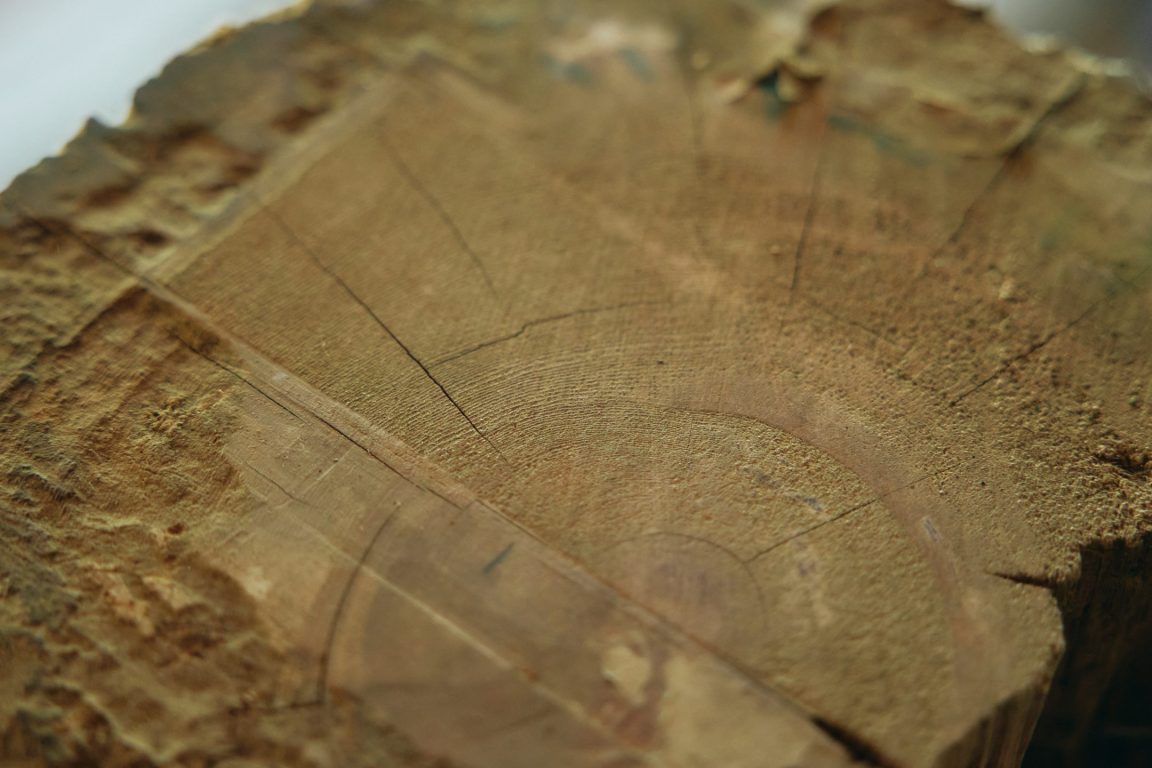
From this point, Mr. Fukuda introduces the architectural allure of Toshogu Shrine that can’t be grasped just by looking. First, he talks about the Five-Storied Pagoda that has five roofs, a kind of pagoda that is seen at many shrines and temples.
Fukuda: Places that are famous for five-storied pagodas include Horyu-ji Temple in Nara, which has one of the oldest surviving wooden structures in the world. It was built in the 600s and has a triangular shape that widens towards the bottom.
On the other hand, the Five-Storied Pagoda at Toshogu Shrine has the same width from the top to bottom. This is a characteristic of five-storied pagodas built in the Edo period (1600–1868). As time went on, pagodas morphed into a narrow, elongated shape. In addition, since it snows a lot in Nikko, it was likely thought that snow wouldn’t accumulate on the pagoda.
Another characteristic is the hanging structure (suspended type) of the central pillar running through the center of the pagoda that hovers above the ground. An existing theory says its purpose is to disperse vibrations and boost earthquake resistance, but the truth is that it’s not clearly understood. However, it doesn’t seem to have spread throughout Japan and is an unusual construction only found in three or four places nationwide.
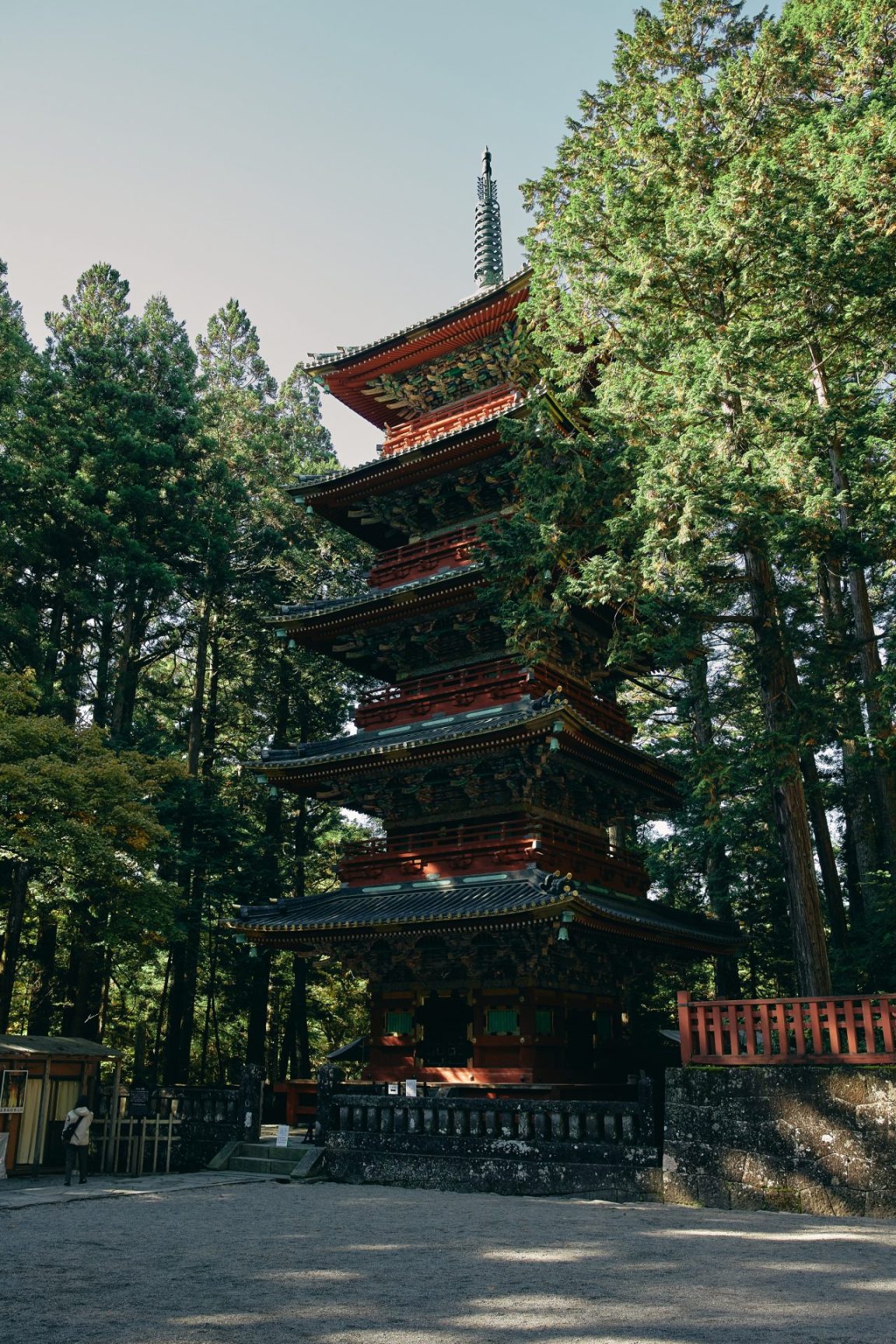
Yomeimon Gate was reconstructed in the time of Iemitsu, the grandchild of Ieyasu. It is completely covered in gold sheets and decorated with carvings and detailed decorations, creating a dazzling appearance.
Fukuda: Originally, the roof was constructed using layers of cypress bark, but in Iemitsu’s time it was changed to components using sheet copper. The roof is easily damaged when made of plant-based materials because it’s exposed to rain, wind, and snow. It can’t be frequently repaired, so the intent is to create a structure that is as durable as possible.
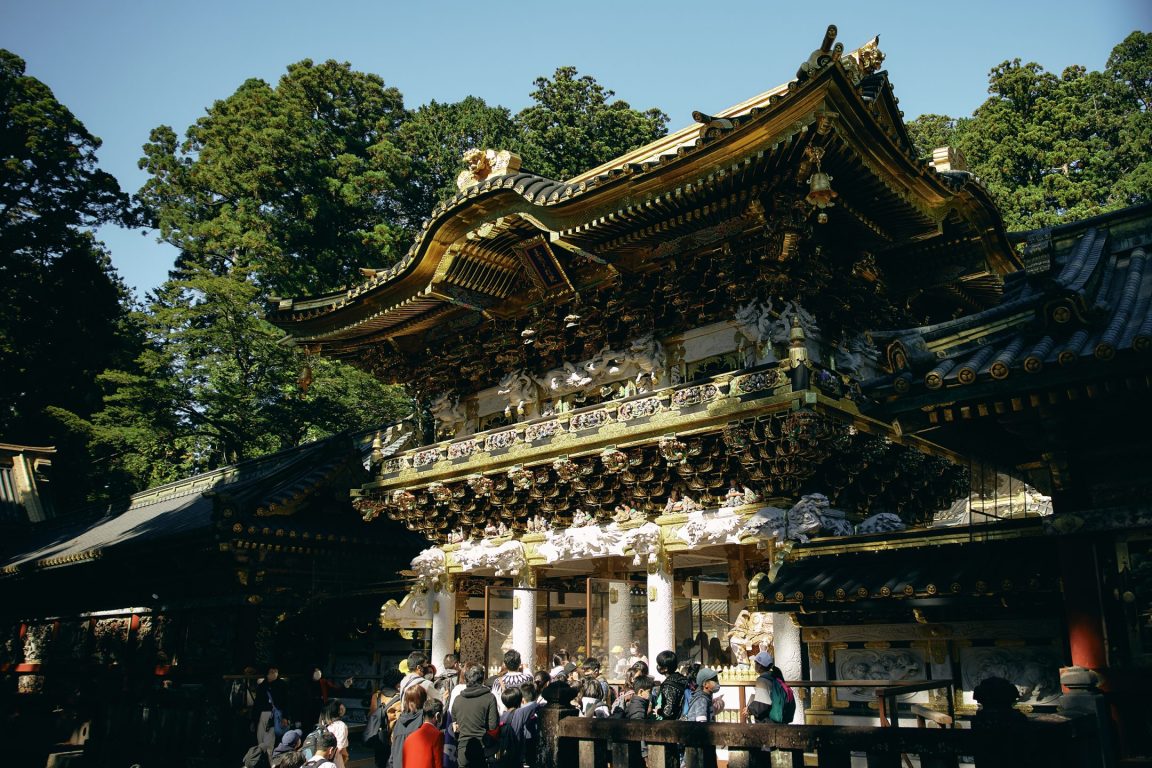
Fukuda: Speaking of Yomeimon Gate, the ‘mayoke no-sakabashira’ (inverted pillar that wards off evil) is famous. As you enter the gate, there is a single pillar to the left that has inverted patterns. This comes from the ancient concept that buildings are only destroyed after being completed. Purposefully leaving it in an incomplete state seems to have played the role of a talisman.
Usually, the patterns are drawn with color, but the patterns on the pillars of Yomeimon Gate were carved using the ‘jimonbori’ carving method. A mistake would mean the pillar couldn’t be used, so the work was difficult and the method applied only to prestigious constructions. Even at Toshogu Shrine, buildings with jimonbori carvings are only found further inside the grounds past Yomeimon Gate.
The parts of the pillars and other components featuring white jimonbori carvings have been painted with pigment made from seashells.
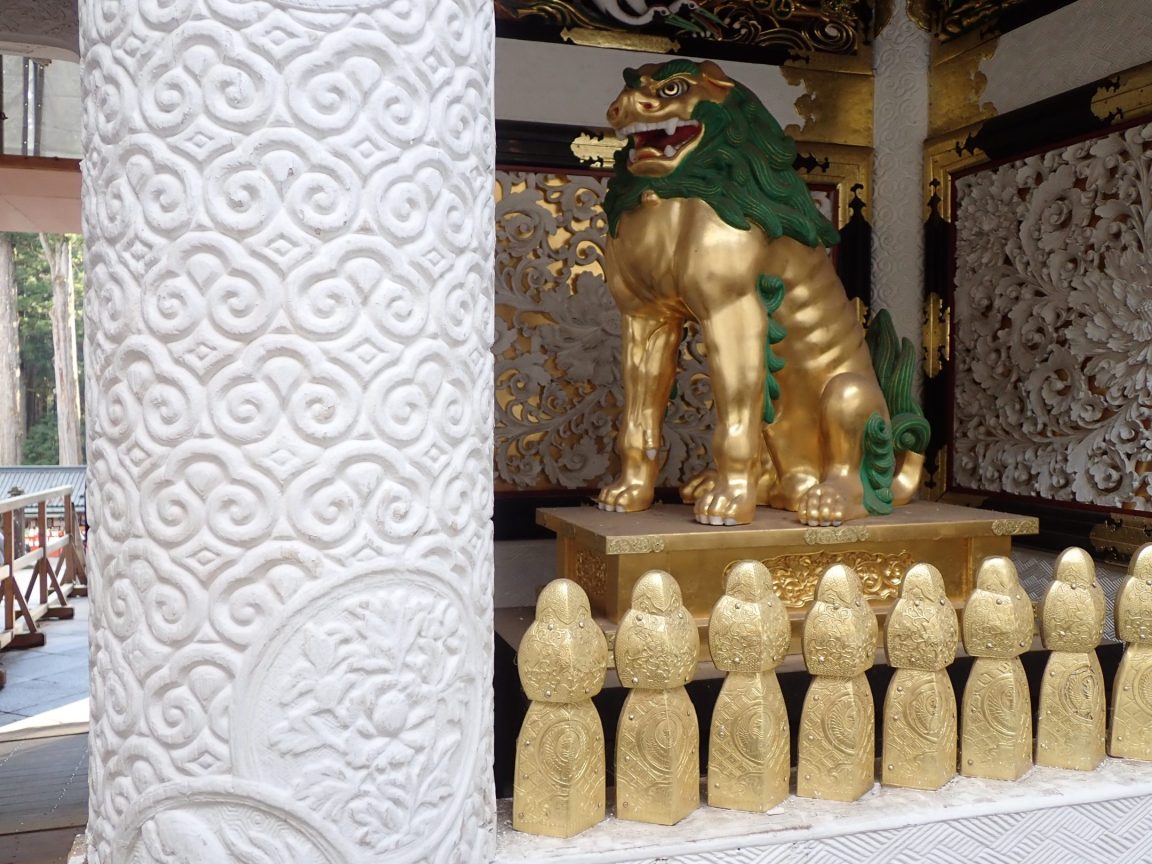
You can see carvings throughout Toshogu Shrine. One of the most famous is the set of carvings of monkeys said to represent human life through eight scenes. It is said that the carvings of monkeys were made on the shrine stable used to tie up horses called ‘shinme’ (sacred horses) that were dedicated to the gods, based on Chinese tradition that contended monkeys healed disease in horses.
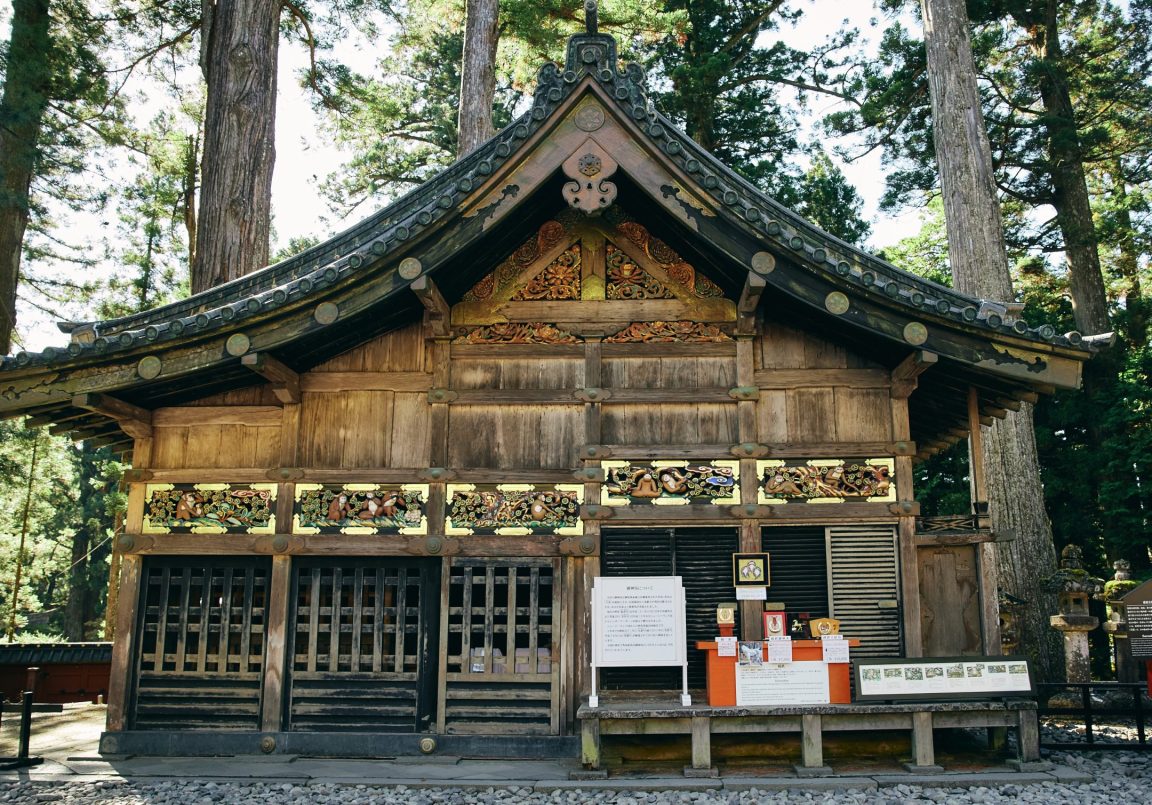
Fukuda: The eight scenes start with birth and progress through becoming independent, falling in love, and getting married. The last is becoming a parent, which loops back to the first scene. Within the scenes is the especially famous carving of three monkeys with one covering his ears, one his mouth, and one his eyes. This depicts childhood and means you should ‘see no evil, speak no evil, and hear no evil.’
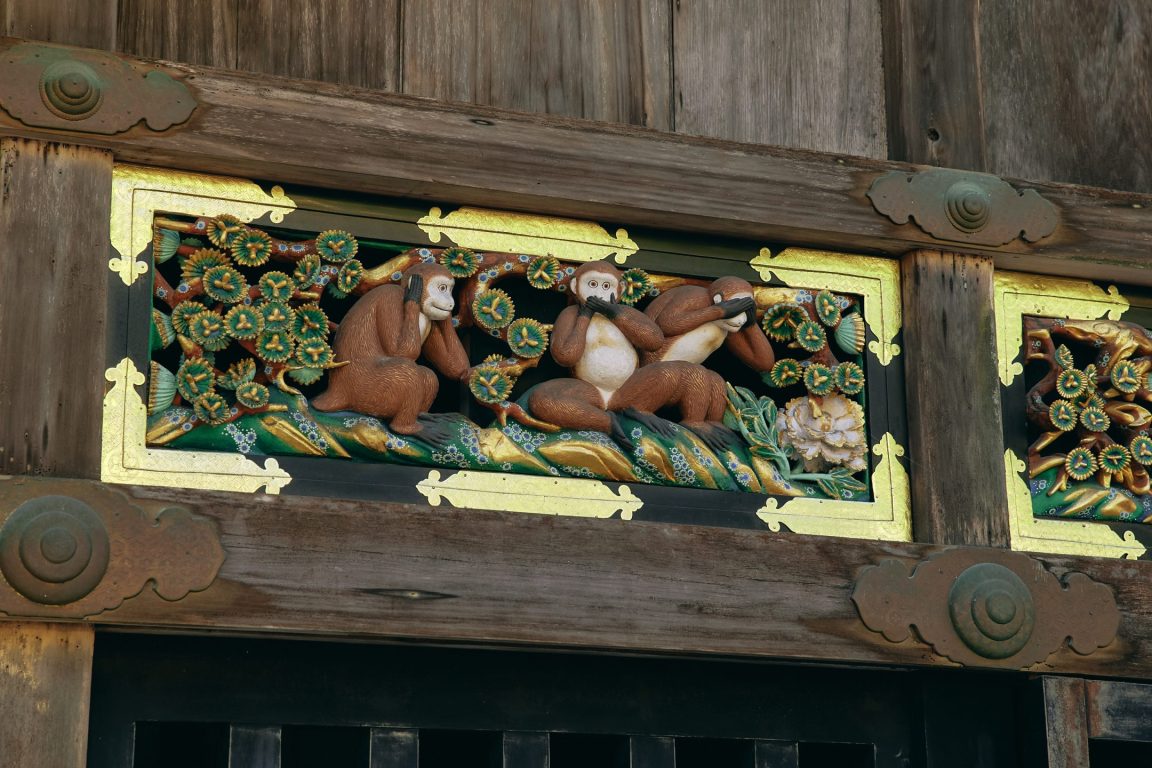
Another must-see is the carving of the ‘imagined elephants’ on the Upper Sacred Storehouse. The point to note is their appearance, which differs somewhat from real elephants. They have long body hair and resemble mammoths. Since no one had seen a real elephant during the era the building was constructed, they were drawn using imagination based on books.
Fukuda: Toshogu Shrine is a building dedicated to Ieyasu as a deity, so there are many carvings on the buildings that have significance. The elephants are likely one of them since the animals are perceived as being big and strong.
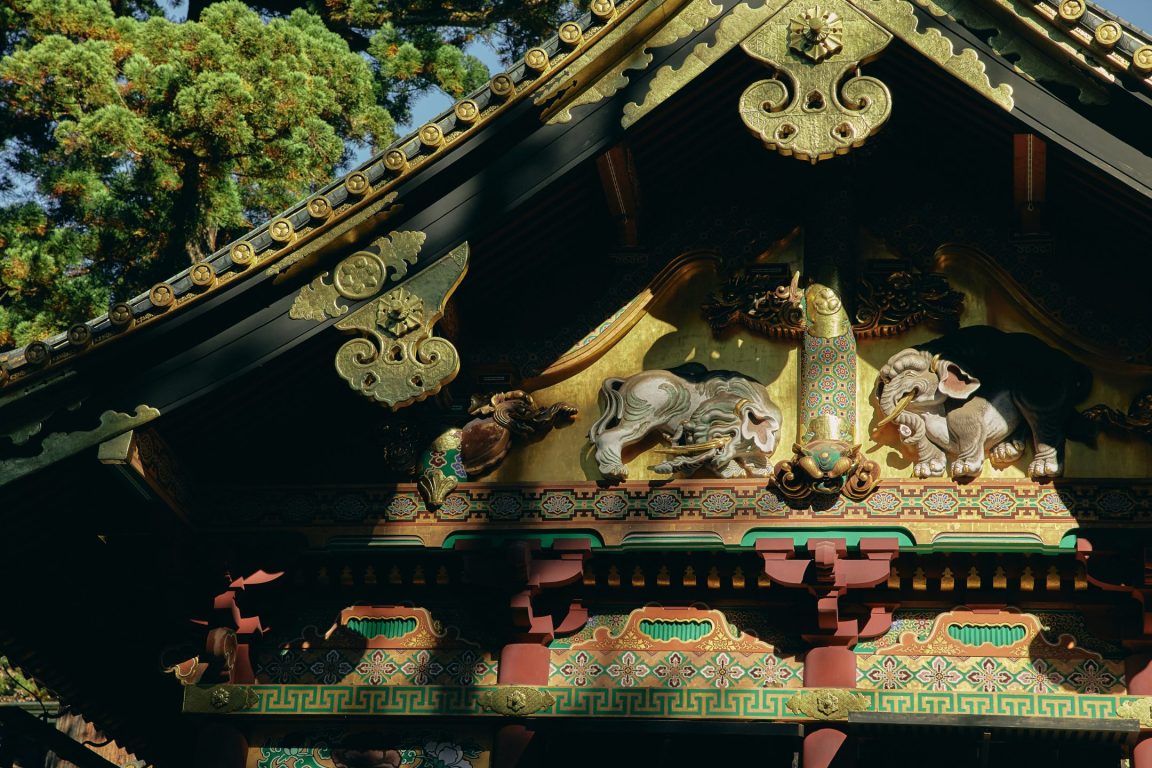
In terms of the number of carvings, Yomeimon Gate is worth a look because it has more than 500 large and small carvings. At Toshogu Shrine, only Yomeimon Gate and Karamon Gate have carvings of people.
Fukuda: On the lower portion are mountain hermits that represent people whose existence is close to a deity. On the upper portion are Chinese children at play. This motif of children playing came to Japan from China and is said to likely depict an image of peace.
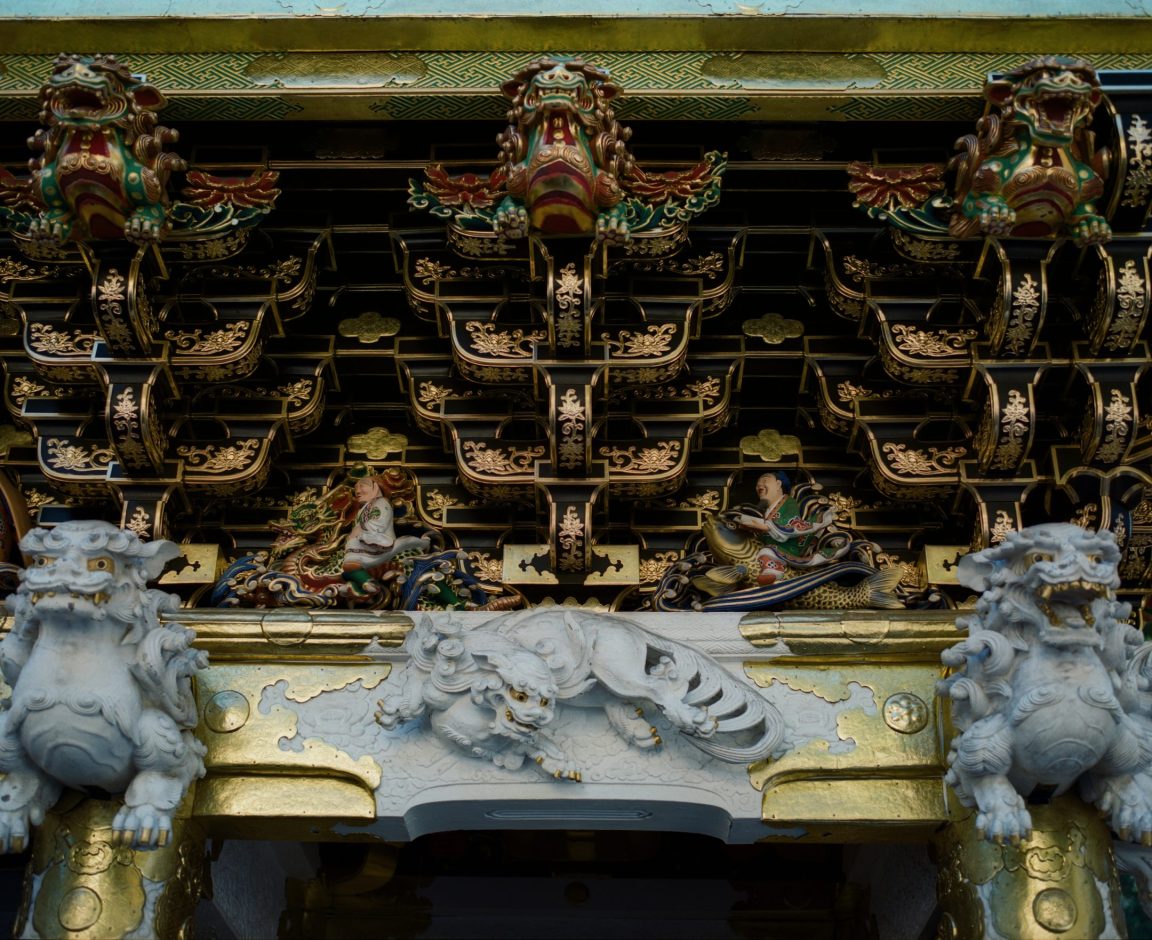
Fukuda: The lions are attached so that they protrude. They’re special animals that appear in myths and other stories. Many of the carved depictions are these kinds of imaginary creatures, including dragons. There are a lot at Toshogu Shrine, so be sure to look for them.
Mr. Fukuda has gotten a close-up view of the technical capabilities of wooden architecture from the past as he carries out repairs. He says he is amazed at the precision of the techniques that assemble wooden materials without metal fittings.
Fukuda: They constructed sturdy buildings using a wide variety of techniques. I believe that learning such techniques must have required great perseverance.
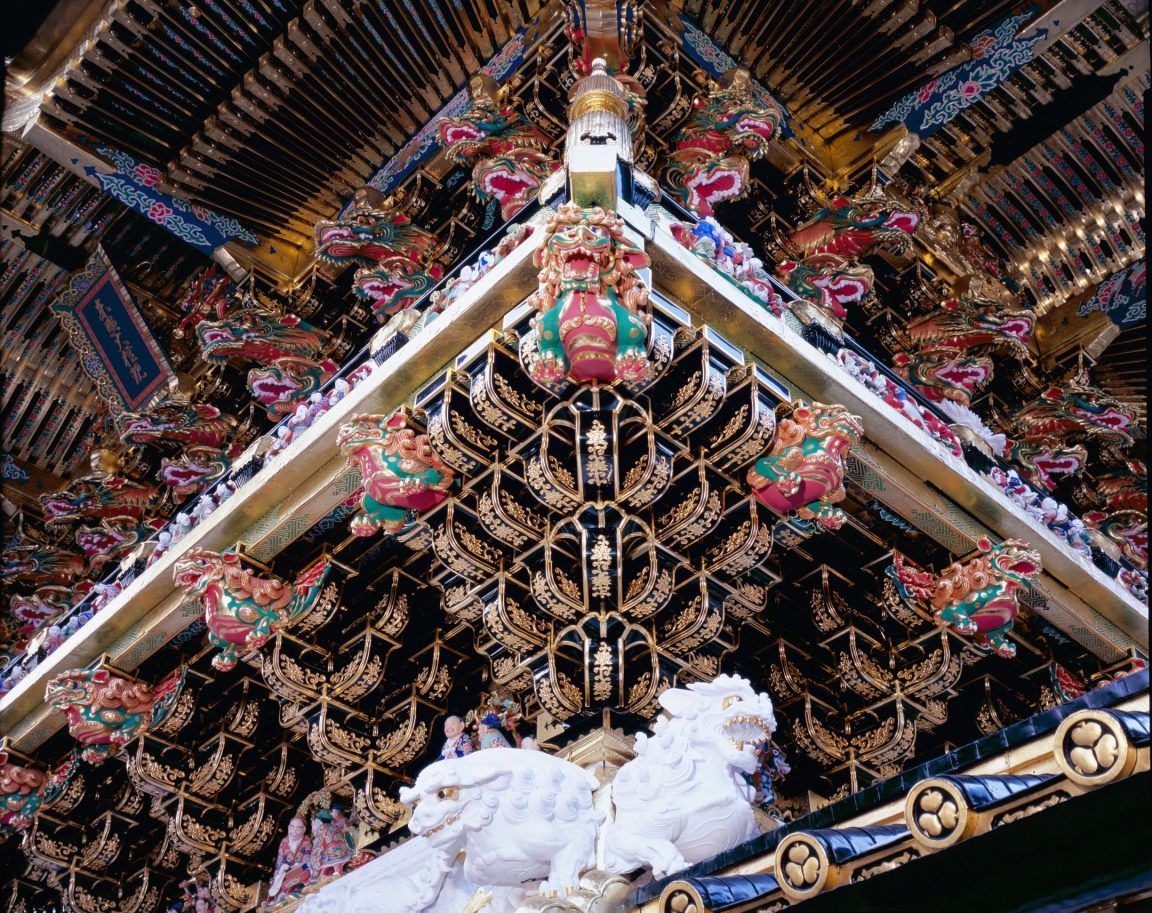
The over 400-year history of Nikko Toshogu Shrine is also a history of shrine carpenters who have constructed and continue to maintain exceptional wooden architecture. You should visit in person and take a leisurely look at that architecture in detail.